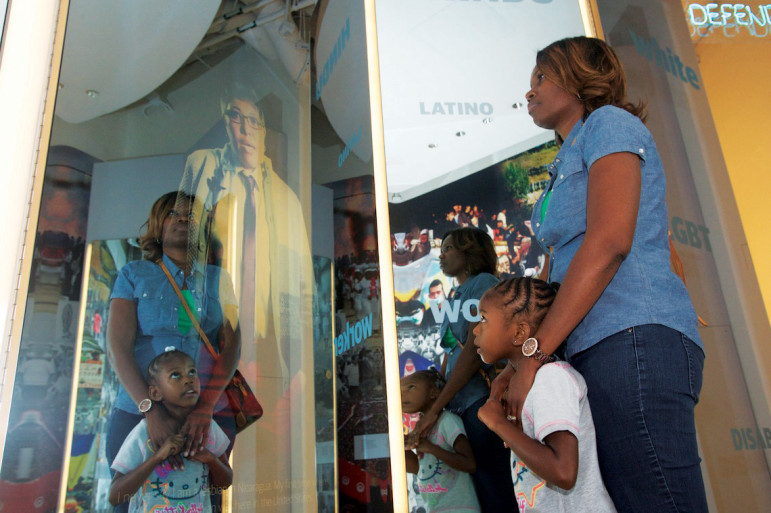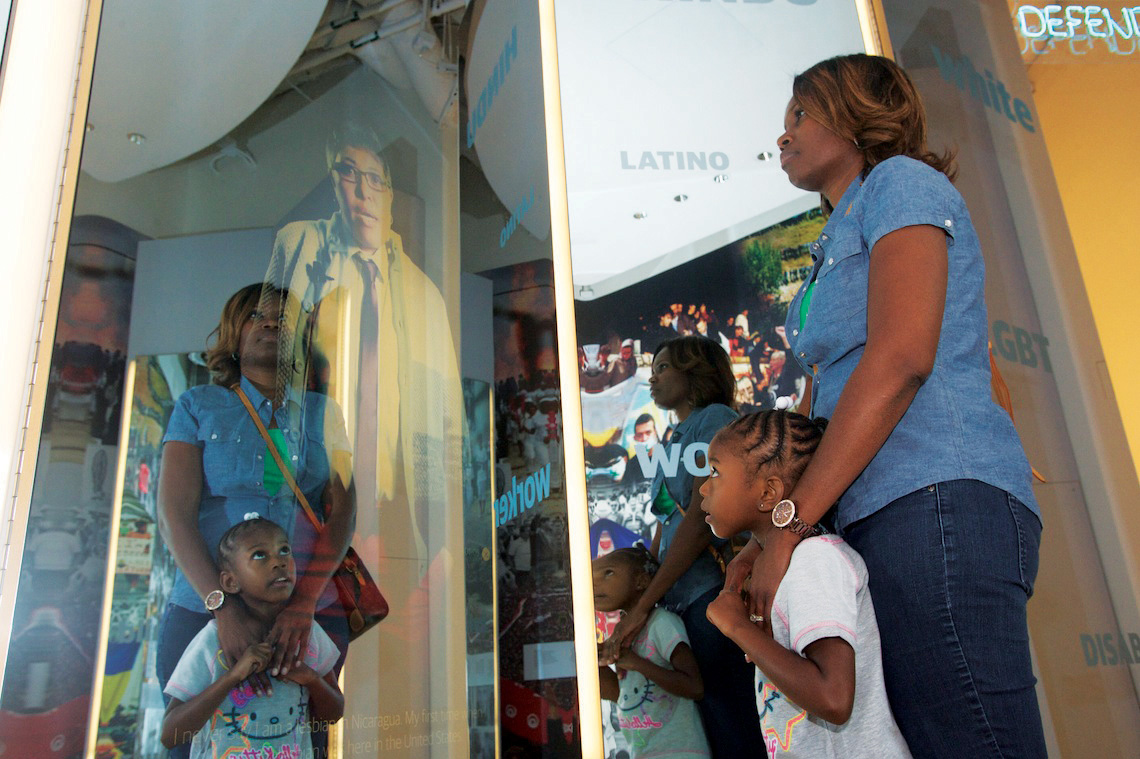
John Glenn
Raising awareness of LGBTQ youth and their safety is a growing need, and is included in the new civil rights center in Atlanta.
Harassment is a serious problem for lesbian, gay bisexual and transgender (LGBTQ) youth. Even when harassment is not outright, kids may still be in an unwelcome climate in which they are marginalized.
Youth organizations can take steps to create spaces that are both physically and emotionally safe for them.
Advocates for Youth, a youth development and sexual health organization, defines safe space as a place where any young person “can relax and be fully self-expressed, without fear of being made to feel uncomfortable, unwanted, or unsafe.” Youth should be comfortable regardless of biological sex, sexual orientation, gender identity or gender expression, race/ethnicity, cultural background, age, or physical and mental ability, the organizations says.
“The first thing to do is to assess the organization’s internal climate,” said Angel Brown, associate director of LGBTQ health and rights at Advocates for Youth.
Assess the organization
Do the LGBTQ youth, staff, and volunteers in your organization or program know that you care about them —individually and as whole people?
[module type=”aside” align=”right”]Resources
Advocates for Youth
A toolkit for youth-serving organizations.
Centers for Disease Control
What schools and parents can do.
Forty to None Project
“Safe and Respected” best practices.
GLSEN
Help make schools safe and supportive.
Human Rights Campaign
LGBT cultural competency.[/module]
Do you offer any information about local LGBTQ communities and resources? Do you refer youth to these resources?
These and other questions are part of a toolkit provided by Advocates for Youth.
The Human Rights Campaign also has a list of best practices for those wanting to assess and improve their work with LGBT kids and families. Organizations that meet the requirements of the list, the All Children-All Families Benchmarks for LGBT Cultural Competency, can get recognition from the Human Rights Campaign.
Brown points out that assessing the environment includes looking at the physical space also.
Do LGBT kids see themselves anywhere in the posters on the walls?
The organization’s communication materials are important. Do they reflect that not all kids are straight? For example, if an organization has a brochure about healthy relationships, does it only mention male-female relationships?
Intake forms communicate a great deal to someone new to your organization, said Ellen Kahn of the Human Rights Campaign. Don’t assume all young people are straight, she said. Give them a friendly way to self-identify rather than only a checkbox for male and female.
Examine policies
Your organization’s mission statement should recognize diversity.
Federal law requires 501(c)(3) organizations to be nondiscriminatory. Your organization can make sure it includes a statement that it does not discriminate on the basis of sexual orientation or gender identity.
An explicit policy statement about gender-based harassment is important, Brown said. She advocates direct language saying that the organization supports the health and rights of LGBTQ individuals.
“It may seem like a simple thing,” Brown said, but it makes a big difference when youth see themselves reflected in those policies. “It helps to change the culture.”
Another way of changing culture is to makes sure there are LGBTQ adults and youth on the board.
When you look at policies with LGBTQ kids in mind, some gaps may appear.
For example, an organization that offers counseling may need a policy that it doesn’t disclose a client’s sexual orientation.
It can also be important to look at hiring policies so that you encourage the hiring of staff that are able to mentor all youth.
Provide staff training
Staff members need training on addressing homophobic and transphobic language when it happens, Brown said. They also need training on how to directly support and be allies of gay and gender-nonconforming youth.
If staff members have reservations and are reluctant to change their mindset, teach them to set aside their beliefs in the interest of being affirming and supporting of youth, Kahn said.
Advocates for Youth encourages training for board members, volunteers and youth.
Staff members need to make a commitment to continued learning, Brown said. People who work with youth need a “diverse toolkit,” she said.
“Youth culture changes quickly and frequently,” she said, so you must commit to ongoing professional development.
The leadership should express and develop their commitment to an ongoing assessment of the organization’s openness and quality of services to LGBTQ youth, Kahn said.
This should include feedback from youth.
As an organization assesses its climate, examines its policies and provides training, changes in its programming can then move forward.
It’s important to deal with all the facets of the process, however, Brown said.
For example, one human services organization which served youth ages 13-24 worked to create a peer-to-peer education program using a youth leadership model. They recruited lesbian, gay, bisexual and transgender youth to take part in the program. However, they had no other systems in place. Policies and communications materials had not been examined and staff training had not taken place.
Their goals were laudable, Brown said, but they had not created a safe space. In such a situation, youth could easily meet with harassment or verbal abuse.
“Young people deserve to be safe, and adults are responsible for their safety,” Brown said.
































